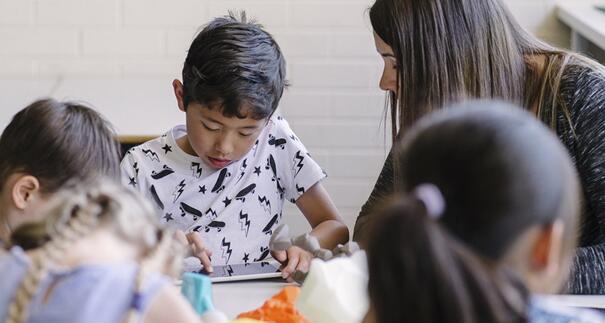GE Additive Education Program Gathers Momentum Globally
More than 600 primary and secondary schools worldwide to receive polymer 3D-printing packages
– Access to 3D printers and curriculum now totals more than 400,000 K-12 students in 30 countries
– Increased global participation
– Package includes a 3D printer, software, filament and curriculum

The GE Additive Education Program’s (AEP) 2018 cycle has awarded a polymer 3D printing package to more than 600 primary and secondary schools in 30 countries. Each package includes hardware, software and science, technology, engineering, art, and mathematics (STEAM) curriculum and will be delivered by 30 September 2018.
For K-12, primary and secondary schools, the program aims to build an ecosystem for 3D printing in education by networking students, machines and content via an online platform, the Polar Cloud. Over the past two years, the AEP has donated over 1,000 polymer 3D printers to schools in 30 countries, providing access to technology and curriculum to more than 400,000 students.
More than 3,000 primary and secondary schools from more countries applied to participate in the AEP’s 2018 cycle, representing a significant year on year increase. This year the five countries with the most recipients are: the United States, Australia, Canada, Spain and the Republic of Ireland.
Educators and students from participating schools join the Polar Cloud to access tools, software and applications in a collaborative and secure environment. Packages awarded in 2018 include a Polar Cloud premium account, a Dremel Digilab 3D45 polymer 3D printer, six rolls of replacement filament, STEAM curriculum and lesson plans.
“Additive’s time is now. It is already transforming how we design, engineer and manufacture complex and everyday items. But we have to keep an eye on the future and ensure we have enough engineers, coders and materials scientists coming through the education system to fulfill the potential of additive manufacturing,” said Jason Oliver, President & CEO, GE Additive.
Teachers are creatively incorporating 3D printing technology into lesson plans across a wider range of subjects to enhance the learning experience. Others have carried out detailed analysis for science fairs, including on how additively manufactured parts could enhance musical instruments. And some schools have organized maker fairs to create and sell gifts to fundraise for community projects.
GE Additive has made a significant financial commitment over five years to invest in educational programs to deliver polymer 3D printers to primary and secondary schools and metal 3D printers to colleges and universities around the world.
Colleges and universities that will be awarded a metal additive manufacturing system as part of the AEP will be announced later this month.
Sources:GE




Recent Comments